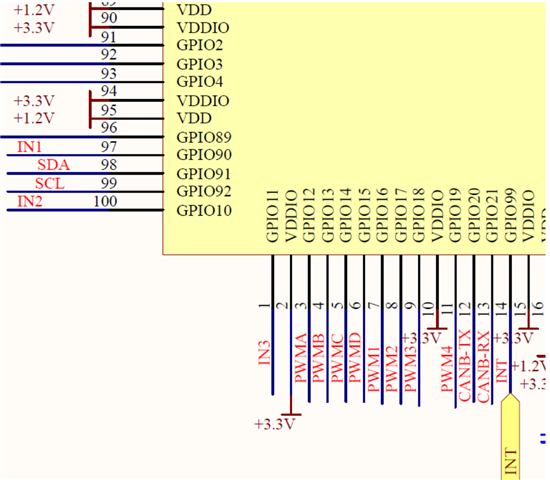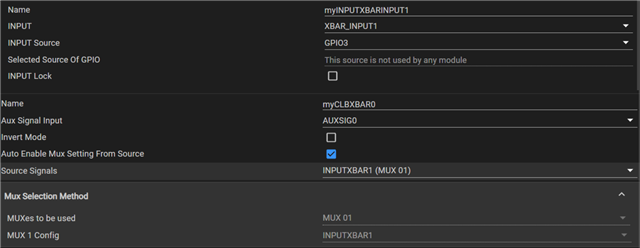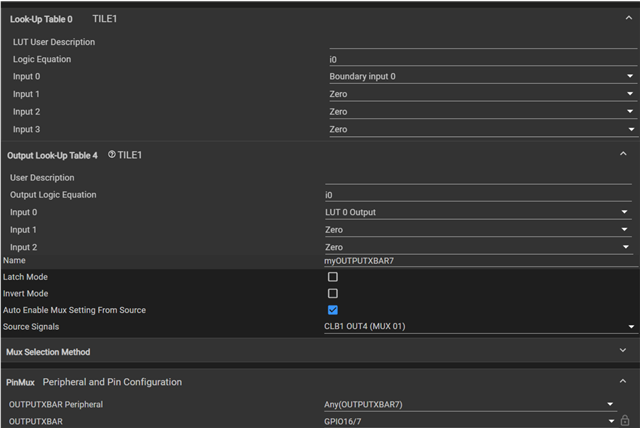Other Parts Discussed in Thread: SYSCONFIG
Tool/software:
What might be wrong with my configuration? Why is it that the output frequency on the GPIO16 pin, measured via an oscilloscope, is only half of EPWM7A’s frequency?



This thread has been locked.
If you have a related question, please click the "Ask a related question" button in the top right corner. The newly created question will be automatically linked to this question.
Tool/software:
What might be wrong with my configuration? Why is it that the output frequency on the GPIO16 pin, measured via an oscilloscope, is only half of EPWM7A’s frequency?



Can you provide more details on what your CLB configuration is intended to do?
I'd like to know if it's possible to feed both user-defined variables and the output waveform of EPWM7 directly into the inputs of the Look-Up Table module, without requiring boundary inputs or occupying physical I/O pins.
You can use the GPREG software inputs to control inputs to the CLB without relying on physical I/O pins. This is an option when you configure your CLB inputs
Is there a demo that uses GPREG as input? I'm not very clear on how it should be used?

After configuring it like this, I don't see any difference, and I haven't found the corresponding configuration.
You should call the CLB_setGPREG function in your .c code to configure the GPREG inputs as needed. Each bit of GPREG corresponds with a CLB input. For example configuring GPREG to 11 (0b00001011) will set inputs 0,1 and 3 to be high and the rest of the inputs to be low. However you must configure the desired inputs as GPREG inputs in SysConfig (which you've done correctly) for the bits in the GPREG register to actually control the corresponding inputs. Hope this makes sense.
Thank you,
Luke
Can it be configured as a step input signal? Or how to route internal signals to boundary inputs?
If using GPREG, the behavior is completely controlled by software. Alternatively you can route internal signals to the boundary inputs by utilizing the Global and Local input mux as well as the CLB-XBAR module.